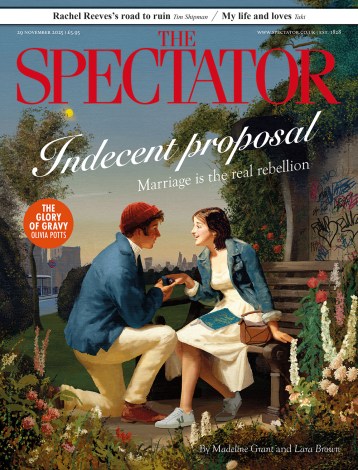Last August President Barack Obama said that the use of chemical weapons in Syria would cross a red line. He repeated the phrase in December: red line.
Why should the line be red and what happens if it is crossed? A simple, unhelpful answer is that the metaphor is taken from a safety gauge indicating a maximum speed, for an aeroplane perhaps, or for an engine’s revolutions. The big fat Oxford Dictionary in 20 volumes traces that figurative use back to the 1970s. But it seems at odds with a warning against chemical weapons. If Assad loosed off clouds of deadly gas, Mr Obama wouldn’t shout ‘Hey, slow down!’
Nor is the Obama red line related to the thin red line presented by the British Army to the Russians. George Orwell, in A Clergyman’s Daughter, invented a Hundred Page History of Britain, a ‘nasty little duodecimo book’ of 1888, which declared anachronistically that Napoleon ‘soon found that in the “thin red line” he had more than met his match’. But the Crimea was undoubtedly the cradle of the phrase. In 1854, at Balaclava, William Russell, the Times correspondent, wrote of the ‘thin red streak tipped with a line of steel’, soon apocopated into thin red line. Robert Gibb (not, for a change, Lady Butler) had a great success with ‘The Thin Red Line’ at the Royal Scottish Academy in 1881.
There is also a red line in ice hockey, but I don’t think we need go into that, for we should rather attend to the line in the sand. No one knows why it should be in the sand: sand is not always available. But it is the line beyond which your opponent must not go. The metaphor seems only about half a century old. Earlier, when people spoke of drawing the line they meant ‘making a distinction’. That phrase developed the meaning of ‘setting a limit’, and this sense merged into the idea of sand-line drawing. ‘Whenever John Major draws a line in the sand,’ wrote a wit in the Scotsman in 1996, ‘you can be sure some Eurosceptic bully will come along and kick it in his face.’ Ignoring lines, sandy or red, is a favourite pastime of Middle Eastern tyrants.





Comments